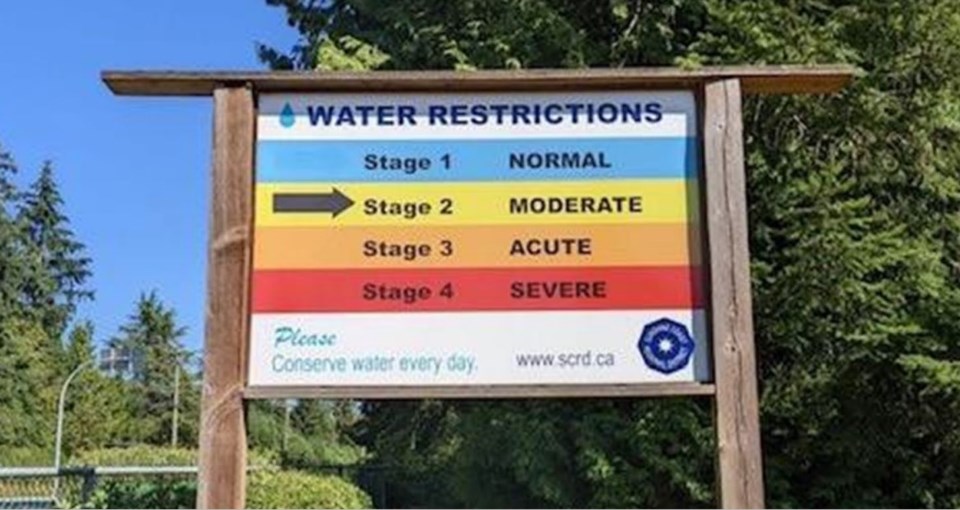To July 11, supplies to the Chapman Water System, which serves the bulk of the Sunshine Coast Regional District’s (SCRD) water clients, included flows from Chapman Creek, Chaster well and the Church Road Well Field according to the SCRD's July water update.
Infrastructure services manager Remko Rosenboom noted that flows from Gray Creek, which at points in past years have contributed 10 to 15 per cent of Chapman system water, were not online. At the July 11 committee of the whole meeting, he said Vancouver Coastal Health (VCH) recently introduced a requirement that a water quality advisory be issued before the SCRD puts that creek’s supply into use. Such an advisory is required to be circulated in writing to the residents who would receive water from that source and in local print media. Those actions are being planned for, with staff “reconsidering” addition of the Gray Creek supply to the Chapman system should a move to Stage 3 restrictions become reality.
Rosenboom stated this additional VCH requirement is designed to ensure the public is aware that the Gray Creek water source is processed using a single rather than multiple forms of treatment. Unlike a boil water advisory, which has impacts for all users of a system’s water, this type of notification is designed to alert those with compromised health that they may wish to take additional precautions.
The SCRD is in the process of exploring the potential for adding treatment forms at Gray Creek but that analysis won’t be completed until next year, according to the manager, who also said if decisions are made to add treatment, it will take several years to design and put a facility in place.
“Why they would issue something like that right smack in the middle of a water crisis is Indicative of a provincial government bureaucracy that is detached from reality. It is kind of disturbing,” was Area A director Leonard Lee's reaction.
Rosenboom explained these were “changes in processes with VCH” rather than a new provincial requirement. He noted that a similar advisory will be issued for Earls Cove's Cove Cay water system. While the addition of a second treatment step for that system’s sole water source is under way, the advisory needs to be communicated to users until that addition is in place and functioning.
In response to a question from Lee, Rosenboom noted that the North Pender water system has both chlorination and UV treatment, therefore no advisory needs to be issued.
Weather a major factor in water use
The water update noted the region’s highest water usage recorded this year occurred on July 6, when demands topped out at 19 million litres. That was up 25 per cent from average day uses recorded throughout June, as the first half of that month saw more rain and cooler temperatures. His presentation pointed out that as has been the case in recent years, higher than average daytime temperatures and extended dry periods remain a key factor in the need for regional water conservation.
Stating that long-term forecasts for our area remain “uncertain” he did not comment on dates for changes to area water restrictions. As of July 5, the SCRD’s Chapman and Eastbourne systems were at Stage 2 restrictions and the remainder on Stage 1. Gibsons remains at Stage 1 restrictions.



